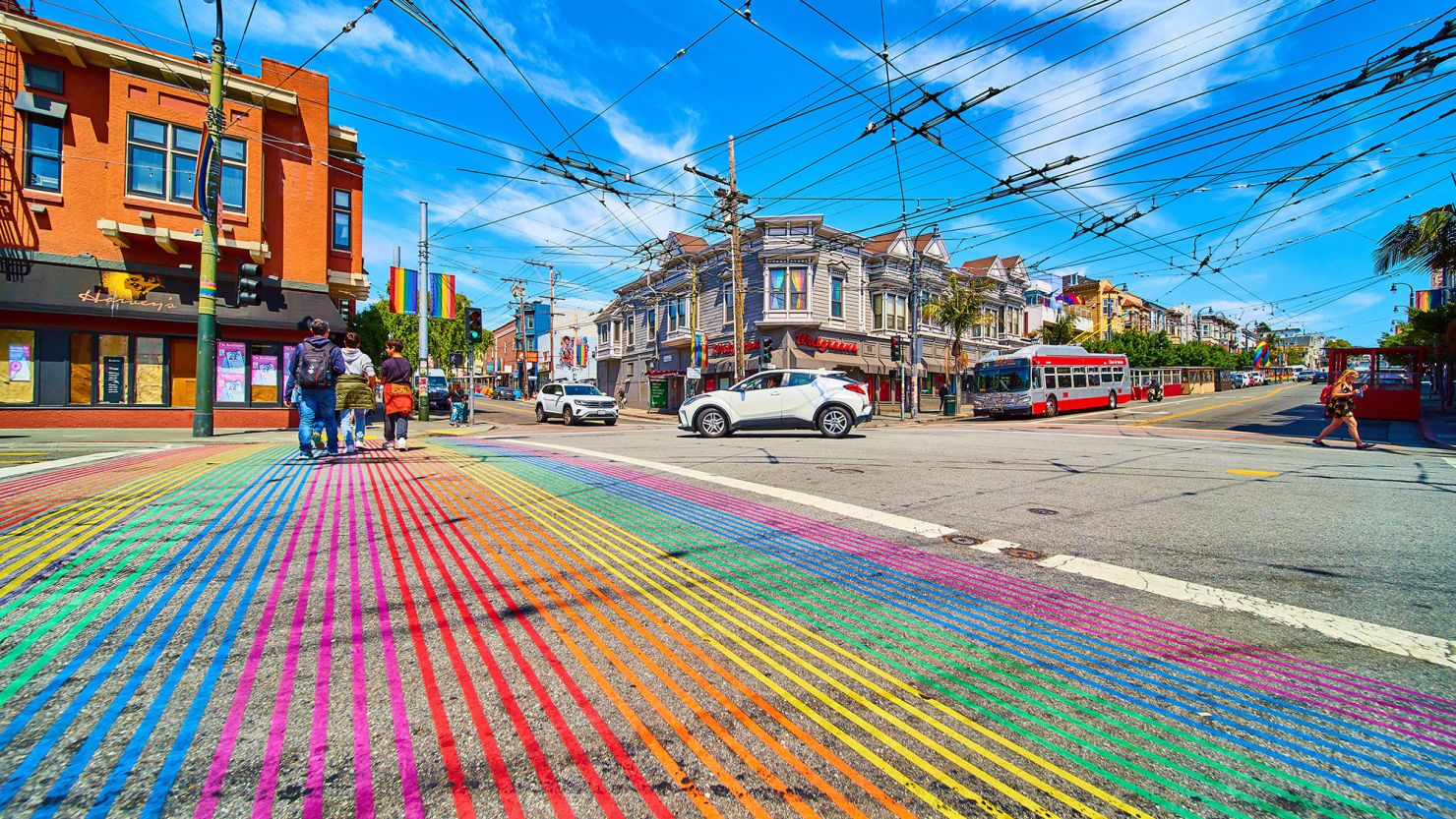THE CASTRO
Bold, Proud, and Unapologetically San Francisco

Overview: The Castro District, often referred to simply as “The Castro,” is a historic neighborhood in San Francisco’s Eureka Valley. It is renowned as one of the first gay neighborhoods in the United States and remains a vibrant center of LGBTQ+ culture and activism.
Demographics: The Castro has a population of approximately 22,271 residents, with a median age of 43 years. The community is diverse, with a significant LGBTQ+ population contributing to the neighborhood’s dynamic atmosphere.
Architecture & Housing: The neighborhood features a mix of Victorian and Edwardian homes, many of which have been converted into multi-unit buildings. Housing options range from historic flats to modern condominiums, reflecting the area’s evolving character.
Culture & Lifestyle: The Castro is known for its vibrant cultural scene, with numerous bars, restaurants, and shops that cater to the LGBTQ+ community and beyond. The neighborhood hosts various events throughout the year, including the annual Castro Street Fair, which features live entertainment, food vendors, and community booths.
Community: The Castro has a strong sense of community, with active participation in local events and initiatives. The neighborhood is home to several LGBTQ+ landmarks, including the Harvey Milk Plaza and the Rainbow Honor Walk, which celebrate the area’s rich history and contributions to LGBTQ+ rights.
Recreation & Parks: While the Castro is primarily urban, it is in close proximity to several parks, including Dolores Park, which offers green space for relaxation and recreation. The neighborhood itself features pedestrian-friendly streets and public spaces that encourage community engagement.
Transportation: The Castro is well-connected by public transportation, including the Muni Metro’s K, L, and M lines, which serve the Castro station. The neighborhood is also accessible via several bus routes and the F-Market historic streetcar line.
Real Estate: The real estate market in the Castro is competitive, with median home prices varying based on property size and location. The neighborhood’s desirability and historical significance contribute to its strong real estate values.
In summary, the Castro District offers a unique blend of historical significance, cultural vibrancy, and community engagement, making it a distinctive and desirable neighborhood in San Francisco.
The Castro At a Glance
Landmarks & Attractions
Castro Theatre – A historic movie palace built in 1922, known for its ornate architecture and vibrant neon signage. Currently undergoing a renovation to transform it into a modern entertainment venue with expanded seating and updated audiovisual facilities.
Harvey Milk Plaza – A transit plaza commemorating Harvey Milk, California’s first openly gay elected official. The plaza features a rainbow flagpole and serves as a gathering place for the LGBTQ+ community.
Pink Triangle Park – A small memorial park dedicated to the thousands of LGBTQ+ individuals persecuted during the Holocaust. Located at the intersection of Market and 17th Streets, it features granite pylons and a central rock-filled triangle.
Parks
Mission Dolores Park – A popular park located nearby, offering expansive lawns, playgrounds, and stunning views of the city skyline.
Restaurants
Beit Rima – A lively restaurant offering Palestinian and Jordanian cuisine, known for its shareable mezze and grilled meats.
El Castillito – A beloved taqueria known for its burritos, particularly the cheese-melted carnitas variety.
Eiji – A Japanese restaurant offering a seasonal omakase menu in an intimate setting.
Anchor Oyster Bar – A cozy seafood spot known for its fresh oysters, clam chowder, and cioppino.
Zona Rosa – A casual Mexican eatery offering flavorful tacos and horchata in a laid-back atmosphere.
Nightlife
Queen Out – A queer rave series founded in 2025, focusing on inclusivity and representation for Gen Z and younger millennials. The event series has rapidly gained popularity, recently moving to larger venues to accommodate growing crowds.
Rikki’s – San Francisco’s first women’s sports bar, opened in June 2025. Named after LGBTQ+ trailblazer Rikki Streicher, the bar features vibrant decor and multiple TVs showcasing women’s sports.
Badlands – A historic gay bar and nightclub that reopened in 2023 after a three-year closure. Known for its lively dance floor and themed nights.
Twin Peaks Tavern – Opened in 1935, it’s one of the most famous bars in the Castro, featuring oversized windows that were unveiled in 1972, making it believed to be the first gay bar to reveal its customers to the outside.